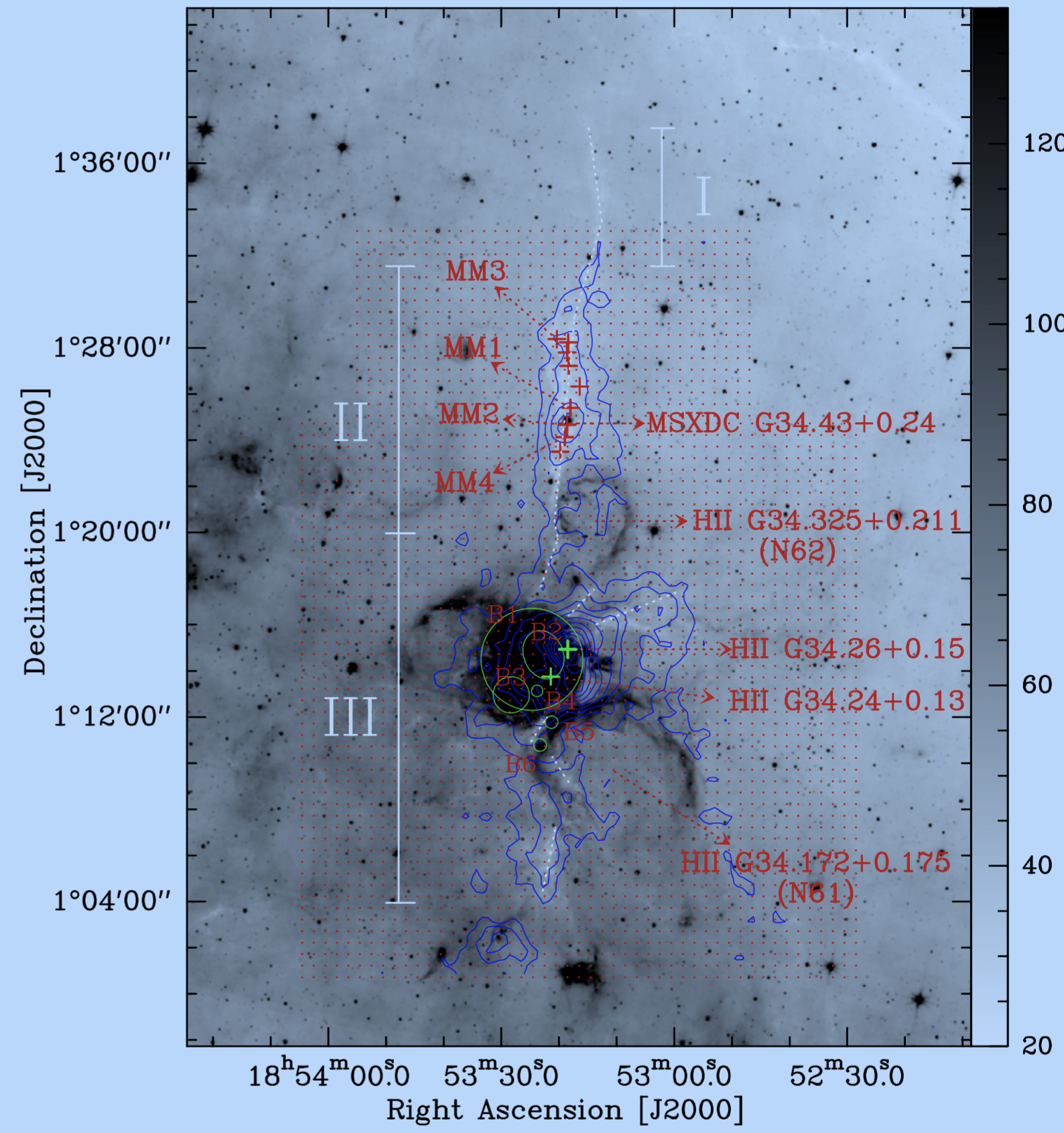Combining data of PMO 13.7 m radio telescope and other archive data, authors from National Astronomical Observatory (NAO) and PMO performed a multi-wavelength study toward IRDC G34.43+0.24. They found that at 8 μm (Spitzer-IRAC), IRDC G34.43+0.24 appears to be a dark filament extended by 18‧ along the north-south direction. Based on the association with the 870 μm and C18O J = 1-0 emission, they suggest that IRDC G34.43+0.24 should not be 18‧ in length, but extend to 34‧. IRDC G34.43+0.24 contains some massive protostars. UC HII regions (G34.172+0.175), and infrared bubbles (N61 and N62). Both infrared bubbles N61 and N62 show a ringlike structure at 8 μm. N61 has a double-shell structure that has expanded into IRDC G34.43+0.24. The outer shell is traced by 8 μm and 13CO J = 1-0 emission, while the inner shell is traced by 24 μm and 20 cm emission. They suggest that the outer shell is created by the expansion of HII region . G34.172+0.175, while the inner shell may be produced by the energetic stellar wind of its central massive star. This paper has been published in ApJ, available at http://adsabs.harvard.edu/abs/2016ApJ...819..117X 
By with SUN Yan Fig.1. Contours of C18O J=1-0 emission superimposed on the 8 um emission map (gray). The integrated velocity is from 53 to 65 km/s. The six green circles indicate the bubbles identified by simpson et al. (2012) I, II, and III. The red dot symbols mark the mapping points. |




